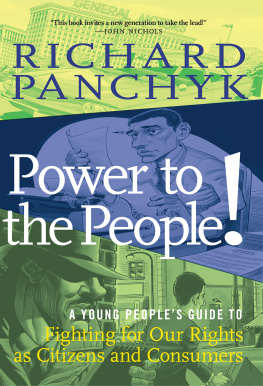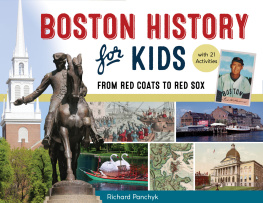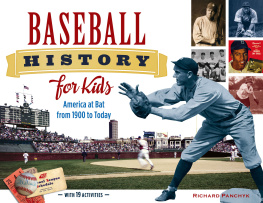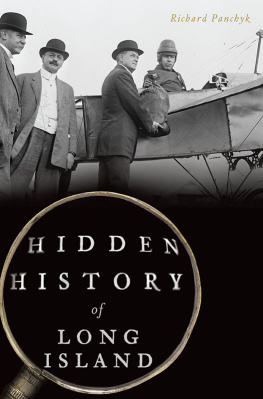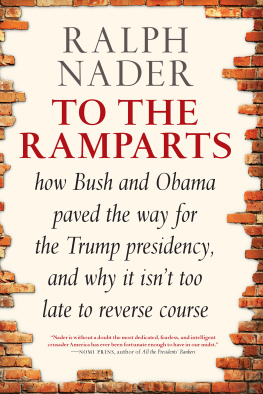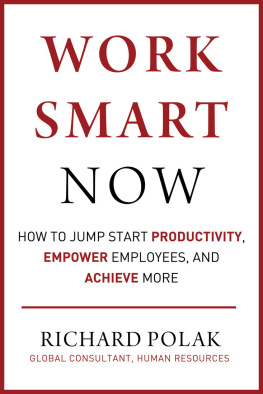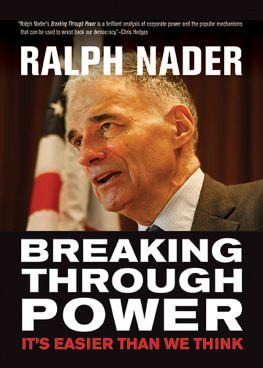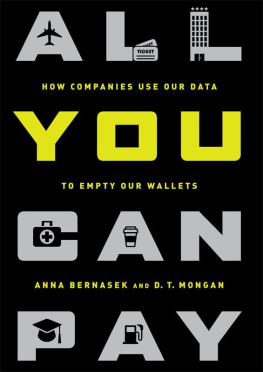A TRIANGLE SQUARE BOOK FOR YOUNG READERS PUBLISHED BY SEVEN STORIES PRESS
Copyright 2021 by Richard Panchyk
For image permissions information see page 256.
All rights reserved.
No part of this book may be reproduced, stored in a retrieval system, or transmitted in any form or by any means, including mechanical, electronic, photocopying, recording, or otherwise, without the prior written permission of the publisher
SEVEN STORIES PRESS
140 Watts Street New York, NY 10013 www.sevenstories.com
College professors and high school and middle school teachers may order free examination copies of Seven Stories Press titles.
Visit .
Library of Congress Cataloging-in-Publication Data
NAMES: Panchyk, Richard, author.
TITLE: Power to the people! : how tort law keeps us safe from corporations, a young adults guide / Richard Panchyk.
DESCRIPTION: New York, NY : Seven Stories Press, [2020] | Series: For young people | Includes bibliographical references. | Audience: Ages 10-14
IDENTIFIERS: LCCN 2020050687 (print) | LCCN 2020050688 (ebook) | ISBN 9781644210888 (trade paperback) | ISBN 9781644210895 (epub)
SUBJECTS: LCSH: Tort liability of corporations--United States--Juvenile literature. | Torts--United States--Juvenile literature.
CLASSIFICATION: LCC KF1301.A2 P36 2020 (print) | LCC KF1301.A2 (ebook) | DDC 346.7303--dc23 LC record available at https://lccn.loc.gov/2020050687 LC ebook record available at https://lccn.loc.gov/2020050688
Book design by Stewart Cauley and Abigail Miller
Printed in the USA.
9 8 7 6 5 4 3 2 1
Contents
CHAPTER 1
RALPH NADER AND THE FIGHT FOR CONSUMER PROTECTION
CHAPTER 2
UNSAFE!
CHAPTER 3
THE RISE OF CORPORATE IDENTITIES
CHAPTER 4
CORPORATIONS TODAY
CHAPTER 5
WHAT ARE TORTS AND TORT LAW?
CHAPTER 6
HOW DOES A TORT LAW TRIAL WORK?
CHAPTER 7
LETS SETTLE THIS
CHAPTER 8
WHO CAN YOU SUE?
CHAPTER 9
THE EVOLUTION OF TORT LAW
CHAPTER 10
COFFEE, CAKES, AND TOYS, OH MY!
CHAPTER 11
PEOPLE POWEREVERY VOICE COUNTS
CHAPTER 12
PEOPLE PRESSURE=CHANGE FOR THE BETTER
CHAPTER 13
THE TORT LAW MUSEUM AND THE FUTURE OF CIVIL ACTION
Acknowledgments
I OFFER A VERY SPECIAL AND HEARTFELT thanks to Ralph Nader, who has been an inspiration, a mentor, a teacher, and a friend, for truly believing in me and in my work over the last fifteen years. His optimistic persistence and his deep commitment to tort law and empowering the average citizen made this book possible. Thanks to Rick Newman at the Museum of American Tort Law for his help and encouragement. Thanks to John Richard for providing some images for the book. And of course, thanks to Dan Simon at Seven Stories Press for believing in the importance of this project.
Preface
EVERYTHING GOOD IN THIS WORLD STARTS with one person.
Every innovation, every movement for a better country and a better planet, begins with just one person.
Yes, it often does take many people to make a change happen, but the seeds of change start with you and me. The seeds of change start with a single idea: a thought, a hope, a vow, a dream. From there, a movement can grow and one persons voice can become a chorus of tens, hundreds, thousandsa chorus that will be heard loud and clear by the powers that be.
In this book, youll read about how one person CAN make a difference in fighting against injustice, starting with the story of a man who inspired generations of Americans to take action. Youll read about how corporations became powerful and took over the country, and how we can all fight to take our country back and protect our rights as citizens. Youll learn about tort law and how our Constitution guarantees us the right to challenge even the largest corporations when we have been wronged.
Hopefully, youll be inspired to become an involved citizen and understand how you can be heard, whether in a court of law, at the ballot box, or within a group of like-minded people. We can make a difference, all of us. Embrace your hopes and never believe that you have no voice or power. You do. I do. We all do.
CHAPTER ONE
RALPH NADER AND THE FIGHT FOR CONSUMER PROTECTION
THE TALL, THIN MAN WALKED BRISKLY ALONG THE sidewalk, well aware he was being watched. This had been going on for some time now, and he knew exactly who was following him. Hed recently made an enemy, and it wasnt just one person. No, his enemy was an entire companyone of the largest and most powerful companies in America. As he turned to go into his building, the man knew his stalker was taking photos of him from across the street. Let him snap away, the man told himself. That wont frighten me from my mission. I may be just one person, but no company is going to intimidate me, no matter how big they are. I am going to fight thisand win!
From the way its shown in old movies and television shows, youd think that the 1950s was a carefree time in America.
Maybe it was in some ways. There were exciting, stylish cars, drive-in movies, roadside diners, and a new craze called rock and roll music. There was a lot that made the decade seem cool. But life was not all fun and games. There was also a lot of danger in everyday life back then. For one thing, almost half of the adult population smoked cigarettes in the 1950s. And they smoked everywherein offices, homes, restaurants, and even on airplanes. Even if you yourself didnt smoke, you inhaled plenty of smoke anyway. The cars sure looked nice, but they were unsafe in many ways and caused many thousands of preventable deaths every year. Even the toys that 1950s kids played with were hazardous.
Few people took note of any of these hazards of everyday living with a determination to do something about them.
Until, that is, a New England native named Ralph Nader came onto the scene. It was during the late 1950s that Nader, a young lawyer from a small town called Winsted in northern Connecticut, began to take a careful look at the dangers all around him.
Born to Lebanese immigrant parents, Nader had taken an early interest in the law and government while still in elementary school. His parents were eager to feed his curiosity and brought him to observe local county courtroom trials, and town meetings in Winchester. They let us observe and afterward ask questions or make comments as part of dinner table discussions, said Nader, of how he and his siblings were treated. Learning how to listen was a key part of Naders childhood. By listening, he learned a great deallistening to his parents stories about their past, listening to their guests, listening to the news on the radio, listening to his teachers.
He was also very much in touch with nature as a kid. He enjoyed the fruit trees in his New England yard, the vegetable garden where his family grew tomatoes, lettuce, beans, cucumbers, radishes, and squash, and the dense woods he crossed to get to school. This appreciation for nature helped mold his later desire to protect the environment from pollution and destruction. He also learned to love history and to appreciate the local landmarks in his hometown. His mother encouraged him to be an independent thinker; a leader had to think independently to be innovative. Turn your back on the pack, she would tell him.

